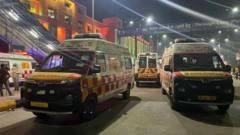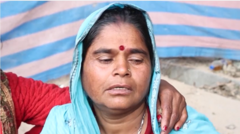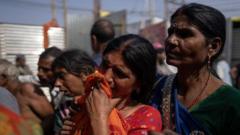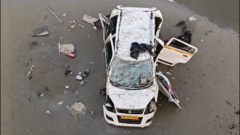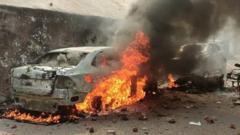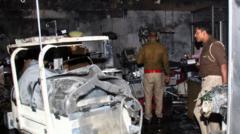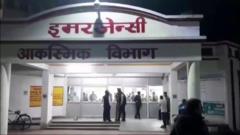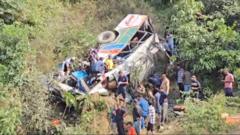The Kumbh Mela festival faced tragedy as 15 pilgrims were killed in a stampede at New Delhi's central railway station. Delays in trains exacerbated the situation, prompting fear and chaos among thousands of devotees.
Tragic Stampede Claims Lives at Kumbh Mela Train Station

Tragic Stampede Claims Lives at Kumbh Mela Train Station
Fifteen fatalities reported following chaotic scenes at New Delhi's rail hub as pilgrim crowds surge for India's largest religious festival.
Fifteen lives were lost in a devastating stampede at the New Delhi Railway Station on Saturday, as thousands of Hindu pilgrims tried to board trains to reach the Kumbh Mela, the world’s largest religious congregation. The incident, reported by local authorities, also left 15 others injured.
Delhi's caretaker chief minister, Atishi, addressed the media outside a hospital, confirming the casualty figures while expressing her condolences. Prime Minister Narendra Modi took to social media to convey his sorrow and announced that aid was being provided to those affected by this tragic event. Union Minister for Railways Ashwini Vaishnaw stated that an investigation is underway to understand the circumstances leading to the stampede.
Earlier in the day, reports indicated that the crowds had intensified due to delays in rail services for the Kumbh Mela, prompting the Ministry of Railways to deploy additional trains to manage the surging numbers. This festival, which commenced in mid-January and will run until the end of the month, is anticipated to draw an astounding 400 million people throughout its six-week span.
The Kumbh Mela, taking place in Prayagraj, Uttar Pradesh, is marked by its unique cultural significance, where pilgrims believe a mythical river flows alongside the Ganges and Yamuna. The current Maha Kumbh is particularly notable as it coincides with a rare celestial alignment occurring once every 144 years, attracting even larger crowds than usual.
Managing the massive influx of attendees presents ongoing challenges for Indian authorities. Just last month, a similar tempestuous occasion resulted in 30 deaths as pilgrims rushed to partake in ritualistic bathing, and historical precedents indicate that such incidents are not uncommon. Past tragedies include a 2013 incident in Prayagraj where over 40 lives were lost and a tragic event in Nasik, where 39 people were crushed in a narrow alley.
As the memorial for the departed is echoed within the hearts of many, pleas for safe conduct and organization of future gathers loom large in the backdrop of this monumental event.



